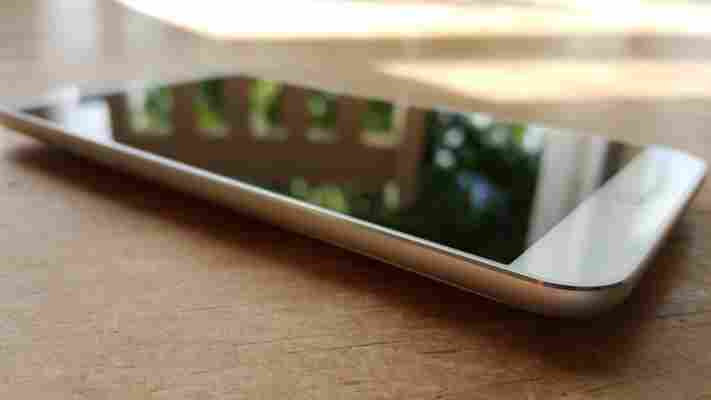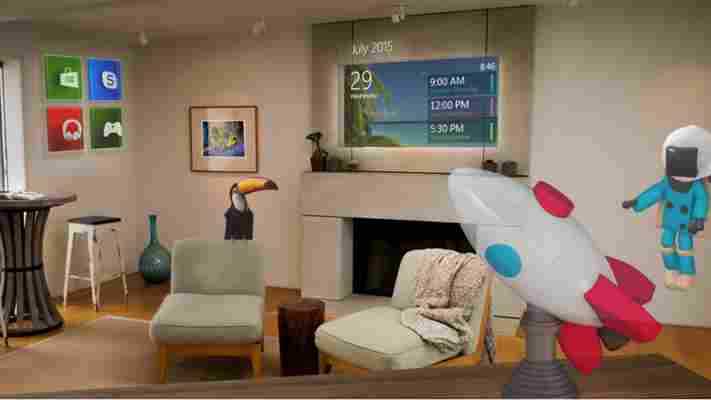I’ve been writing about Ubuntu smartphones and tablets on and off for the last few years. I’ve had the opportunity to pick Canonical’s founder Mark Shuttleworth’s brain on a few occasions too.

One thing that’s always struck me is how long it’s taken to get Ubuntu mobile hardware onto retailers’ shelves. Canonical was talking about ‘Ubuntu for Android’ in 2012, and it’s only really just now that a device with hardware worth having has gone on sale running the Ubuntu OS.
Even then, it’s not big name manufacturers making and selling the devices – BQ and Meizu; neither of which I’d heard of before Canonical got involved with them.
With the Meizu MX4 Ubuntu Edition now on sale for €299, I’ve spent 24-hours playing around with it to see if it offers a viable alternative for users to iOS and Android.
The Meizu MX4’s display is a Gorilla Glass 3-equipped 5.36-inch panel (1,152 x 1,920 pixels), which just about remains visible on full brightness in direct sunlight.
Despite the fact that it has a very plasticky white (or black) rear panel, the front of the MX4 and the overall profile belies its mid-range price tag. There’s probably a reason for that though: it’s hard not to think about ‘inspiration’ that might have come from previous generation iPhones. Does that ‘home’ button and bezel look familiar to you too?
Nonetheless, the result is that it’s light, slim and easy to use one-handed.
While the back of the device is removable, the battery is not. There’s no microSD expansion port hidden away either, which is a bit of a shame as the internal storage maxes out at 16GB.
Unfortunately, the white plastic panel is a bit of a fingerprint magnet too.
On the rear is a 20.7-megapixel sensor, which after a few quick test snaps offer encouraging, though not perfect, results (below). Obviously, this will be getting a more thorough test in a full review.
On the front, there’s a 2-megapixel sensor for video calling and selfies. Neither of which I engage in too frequently, so that’s fine by me. If you do love selfies, you might find the MX4 a bit lacking in that department.
Hardware isn’t really where the Ubuntu MX4 sets itself apart from the rest of the smartphone crowd, though.
As an Android user (primarily), it was clear after just a few minutes that it will take a little time to get used to the MX4 Ubuntu Edition.
The main navigation is split into panels (Canonical calls them ‘Scopes’). The first presents information relevant to where you are, so it’ll show you local restaurants or bars or other information, depending on your needs. Scrolling down on this panel shows you trending Twitter topics. Clearly, this panel is all about information you might want ‘now’.
Scrolling across through the next few panels reveals news, apps, music, video and photo panels. There’s also a device management panel.
What’s key about the scopes is that on-device information is presented alongside content that hasn’t already been downloaded, such as with Videos, for example.
The Photos scope shows your cloud-stored images alongside local ones, if you connect your accounts.
To access core apps like the dialer or messaging, you swipe in the from the left-side. Swiping in on the bottom-right side opens up a list of running apps, swiping up on any of them individually closes them – just as it does on other OSes.
One thing that was immediately noticeable was the lack of features many people would consider ‘essential’ nowadays. Once you’ve taken a photo, for example, the only edit you can make to it without downloading a third-party app is to crop it or rotate it – no filters, no effects, nothing.
That’s not a huge surprise to me, and fits with the company’s explanation of wanting to target keen early-adopters first rather than make a mainstream push, but it’s something to keep in mind if you’re considering making the switch to an Ubuntu phone. It’s an ecosystem in early development, and you can feel that in the app store and overall polish.
I love the idea behind Canonical’s ‘one code base fits all devices’ approach to different form factors, so I want to love Ubuntu on a smartphone. However, it’s going to take some time – and I suspect a fair amount of patience – to really get to grips with what it can and can’t do.
The browser felt a little on the slow side the first time I used it, and there hasn’t been the chance to assess battery life or how it handles particularly demanding apps
On first impressions, it feels more similar to Amazon’s Fire Phone than a straightforward Android phone in the way it presents information. I’m interested to see how the scopes work out over time though, so check back for a full review in the coming weeks.
Read next: Shuttleworth says Ubuntu’s future is more exciting than space travel
Brinks has a safe that runs Windows XP and hackers say they can crack it in 60 seconds
Windows XP is the venerable war horse of operating systems. What it isn’t is the greatest software to base your supposedly super-secure safe system on. But hey, that’s just what Brinks did.

Next month at DefCon in Las Vegas (August 8), a group of security researchers say they’ll demonstrate how to crack one of Brink’s CompuSafe digital safes in under 60 seconds.
And get this: The model in question is the CompuSafe Galileo , which is predominantly used in retail stores for cash management. That means serious amounts of loot would be up for grabs were these hackers more of the black hat variety.
Oscar Salazar and his colleague Dan Petro, both of security firm Bishop Fox , explained to eWeek that they focused on a USB port on the safe’s exterior. They built a software tool that opens the door within a minute once a USB is attached.
The underlying OS running the Galileo is XP, but Salazar says it wouldn’t be any better with Windows 10 . For a start, that USB port the hackers exploited isn’t even physically secured.
The best detail of the researchers’ story is that they literally smashed on the keyboard to discover what happened when arbitrary keys were pressed together. That technique allowed them to escape the safe’s ‘kiosk’ mode and execute the attack.
I’ve contacted Brinks for comment and will update this post if it offers one.
➤ DefCon Hackers Tell How They Cracked Brink’s Safe in 60 Seconds [eWeek]
Read next : Protect your site from bots with metal band logos
Hands on with Microsoft HoloLens: My evening at the Holographic Academy
No doubt about it. HoloLens , the “mixed reality” headset under development from Microsoft, really lit up the company’s rather academic Build 2015 keynote.

First unveiled at its Windows 10 event in January, HoloLens is a headset device that allows you to see high resolution 3D content at a 1:1 scale within the existing environment.
Much of the HoloLens excitement is generated by the mystique surrounding it, amped with considerable precision by the staff of the Hologram Academy who expertly herded their inherently unruly charges into well-ordered lines, systematically locked up their possessions and armed them only with their badge, paper and pen and an eye measurement.
It was an orchestrated performance to rival any Broadway stage act, including various platforms, giant coding projections, bright lights and even applause cues. But that was just the beginning.
Microsoft HoloLens is an untethered transparent holographic computer that lets you view integrated holograms within a physical space. Microsoft calls this “mixed reality” as opposed to the more familiar virtual reality or augmented reality .
The upcoming Windows 10 , which will be released this summer, is the first platform to support holographic computing. Its APIs will facilitate gaze, gesture, voice and natural environmental immersion with the new device. HoloLens helps you see holograms — which are structures of light and not immersive virtual worlds, so the experience is more grounded in reality.
Everything you see is in real time and realistically scaled to the existing environment. You may see and interact with objects that are programmed into your headset, but it is all connected with actual items and objects already in the room. You see everything and everyone as usual and that helps alleviate some of the disorientation associated with virtual reality environments.
The highly interactive HoloLens demo, which spanned more than an hour and a half, did not begin auspiciously. There is a special way to mount the goggles on your head, and putting it on was so unintuitive that eventually two academy experts had to get involved with fitting it properly on my tiny pinhead. I wear a child’s size hat and I wear glasses, and both seemed to impede easy placement of the headset.
The headset is no doubt fragile, but it felt rather hefty and solid for something that sits on your head. You don’t want to mess with it too much.
A “comfort assistant” was on hand to help out, and the fact that there was such a person told me I was not the first nor the last with fit issues. We tried taking the nose piece off, since the headset is supposed to balance on your head — not put weight on your nose — but eventually decided to try again with all the device’s parts intact.
It took a bit of doing, but finally the HoloLens settled so that it was as comfortable as anything strapped to your head can feel and, more importantly, showed the field of vision it was design to reveal.
The good part is once you have the headset on, viewing through it doesn’t impair your vision or make you feel sick. You just see things that people who are not wearing the HoloLens do not see.
Last night’s demo was simple but deep. We used the HoloLens in conjunction with some game moves programmed in the Unity app in conjunction with the Windows 10 Visual Studio. The headset is paired with the computer and the code downloaded to the device. And that’s it. You could see how lightweight the code is — just a few lines of script generated from visual app development kit.
Hand gestures and glances summoned the most dramatic experiences while voice commands and sound effects could also be used. Everything can be tested together or separately, depending on how the software is tweaked.
In stages, we set up a tableau that showed us a platform holding a couple of paper airplanes and two balls suspended in mid-air.
You select what to move with a cursor that you control with head movements. When you’ve selected the object you want to interact with, you use the voice or a simple finger gesture to execute the moves, such as commanding the balls to drop to the floor and roll around or snap back to mid-air where they started.
Programming ambient sound was another aspect of the demo. You can program any music you want and as you move toward the source (like speakers in your room), the music gets louder, just as you’d expect. You can also charge the objects with sound effects so that when the ball drops to the palette and rolls off it onto the floor, you can hear a crunching sound.
You can also track exactly what HoloLens sees while viewing a gigantic immersive wireframe. While it did not do anything special, it gives the scope of the device’s field of view.
The last demo was more immersive, as the Holographic Academy folks created more of what we’d associate with a virtual world. A ring of fire and smoke explodes, and you’re suddenly gazing into a bottomless world under the floor.
Pretty soon I was lying on the floor trying to see to the bottom — though there did not appear to be a bottom, but rather bottomless depth with floating structures and an occasional flying red crane.
My take
HoloLens is in the early stages of development for both hardware and software. From the quick but deep 90-minute preview, I struggle to see what normal household or practical everyday uses it could have aside from interactive games.
The Build keynote offered some insight into its possible scientific, academic and collaborative advantages. While the entire enterprise is not quite there, it is an exciting prospect because even at this early stage the results seem solid.
Overall, performance was impressive for a prototype. Sometimes my view of the scene got cut off and I had to back up to see the entire tableau. Sometimes the gestures were a bit wonky. However, it was steady and solid without a lot of shifting of position. The audio was impressive and behaved as any speaker would.
By the time this product is released into the wild, I suspect that it will be much improved and more intuitive to use. Microsoft would be smart to be vigilant about the fit and proper use of the HoloLens — and what people should expect from it — almost in the same way that Apple offers training sessions for its hardware.
From afar, HoloLens is a pair of not-quite-comfortable black goggles, and a development platform for Windows 10. Close up, it is an intriguing technology that has the potential to change the way we relate to each other and the world around us.
I walked out of our demo feeling charged, and am looking forward to seeing more.
➤ Microsoft HoloLens
